The TIMBER Mountain Bike Bell features a simple multi-setting slider lever that allows the bell to be entirely on when open, quieter in the middle position and then silent when set to off. Instead of a continual cowbell or bear bell design that is always on, or a traditional on-demand chime bell, you can turn the TIMBER on or off, so it’s loud when you need it and quiet when you don’t, which makes for an incredibly functional entity. It utilizes a nylon band, and metal bell body with a solid brass bell that has a crisp, clean sound.
“Be heard before being seen.”
It comes in two models, the original Quick-Release and the newer Bolt-On, both of which retail for $24.95.
For further information refer to mtbbell.com.
TIMBER Quick-Release
I initially tested the original Quick-Release model of the TIMBER bell for a couple of years. It comes with two separate o-rings lengths to fit all handlebar sizes, and this design also allows the bell to be placed at the stem or by the grips. The QR design makes the bell easily swappable between different bikes, and you can get spare o-rings when they stretch out, or you lose or break one. Installation is pretty simple, add the proper o-ring length to the bottom of the clamp with the tab facing upward and outward, cradle the bell on the handlebars and pull the tab of the o-ring up until it captures the upper hook to secure the bell. You can have the bell face forward or backward on the handlebars (lever in front or lever in back), depending on your preference or frame/handlebar interfacing.
TIMBER Bolt-On
The newer TIMBER Bolt-On basic design is identical to the QR model, but it features a tight, durable bolted mount system that won’t spin, wiggle, shimmy, or rattle on your handlebars. It emulates a GPS computer mount system and features a flexible nylon band that tightens to your bars with a 5mm hex bolt that threads into a solid brass insert for durability and strength. The band has a 31.8 mm diameter and fits on the broadest part of the handlebars located right next to the stem. The system also includes a flexible 22.2 mm shim for mounting your the bell near the grips and closer to your hands (or for smaller bars). Installation is simple, remove the bolt, and starting at the grip location, pry open the band and pop it over the handlebars, and slide it next to the stem and screw in the bolt until tight. Just like the QR version, you can have the bell face forward or backward on the handlebar.
How Does It Work?
The bell’s lever actuates a cable that is attached to a solid brass bell which offers has a crisp, clean sound. Moving the lever downwards lets the ball hang loosely down so it can freely clang away against the sides while moving the lever up tucks the ball tightly into its top receptacle for a silent mode.
When the lever is in the open and middle positions the motion of the bike activates the sound, and the volume and frequency increase when riding rougher trails. Sometimes when riding on smooth and calmer trails it might not make enough noise, but a simple wiggle of the bars will make your presence known.
The active functionality of the TIMBER helps communicate to other trail users a “Just a friendly reminder that I am here.” Horses and dogs hear the bell long before their humans and help them alert them to your presence as you come down the trail. I was out on a bike ride recently and came upon a large family with two friendly dogs, and one of the teens stated “Thanks for having the bell.” Of course, it will likely not work for those users that have earbuds jammed in their ears that are playing at loud volumes, but those are a problematic group.
Depending on your requirements and personal desire, you can install it next to the stem or over next to the grips for instant sound shifting, and either location is within an easy reach of your hands. I liked it next to the stem since it kept it away from the shifting controls and was unobtrusive. Additional I preferred the lever pointing out forward since I had fewer interference issues with the frame when I had it mounted next to the stem.
Why Use A Bell?
Having a bike bell of any sort is a paramount piece of equipment as it informs other trail users of your presence with a perceptible communication (ding ding), and it’s especially crucial with issues surrounding advocacy, preserving trail access and trail group clashes. Utilizing a bell makes an encounter with other riders, hikers, horses, and wildlife including bears and mountain lions a much more pleasant, friendly and helpful endeavor so that everyone can enjoy their own outdoor experience and not feel like they’re being run over. There are multiple methods of alerting and warning others users while biking, such as bear bells, shouting out your presence and using a traditional on-demand bike bell, but the TIMBER combines the best of all the bell designs with the ability to turn the bell off when it’s not needed.
Bottom Line
The TIMBER Mountain Bike Bell is a highly functional bicycle bell that was specifically designed for mountain bikers, and it can fit the gamut of handlebar diameters. During my extended test period, it has been durable and useful, and I have enjoyed the ability to switch it on and off at my discretion, and it’s a great way to warn trails users of my presence. I liked the security and stability of the Bolt-On version, though the QR model is easier to swap between bikes.
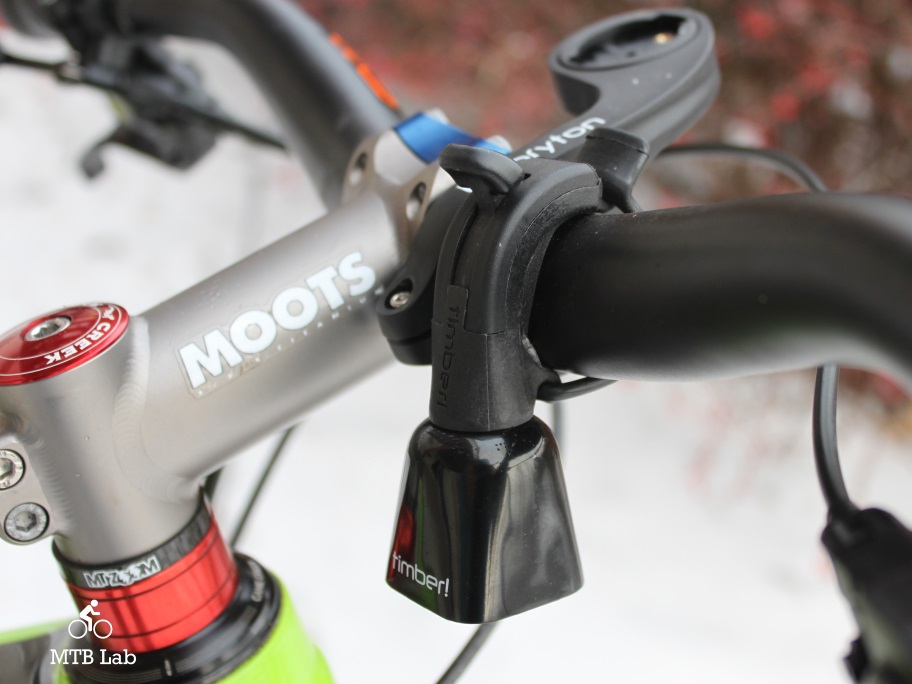
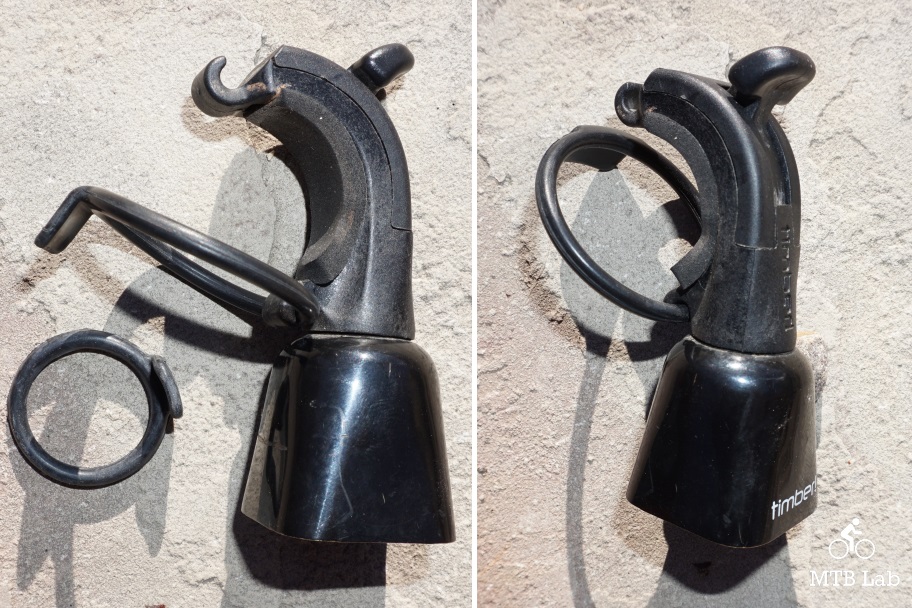
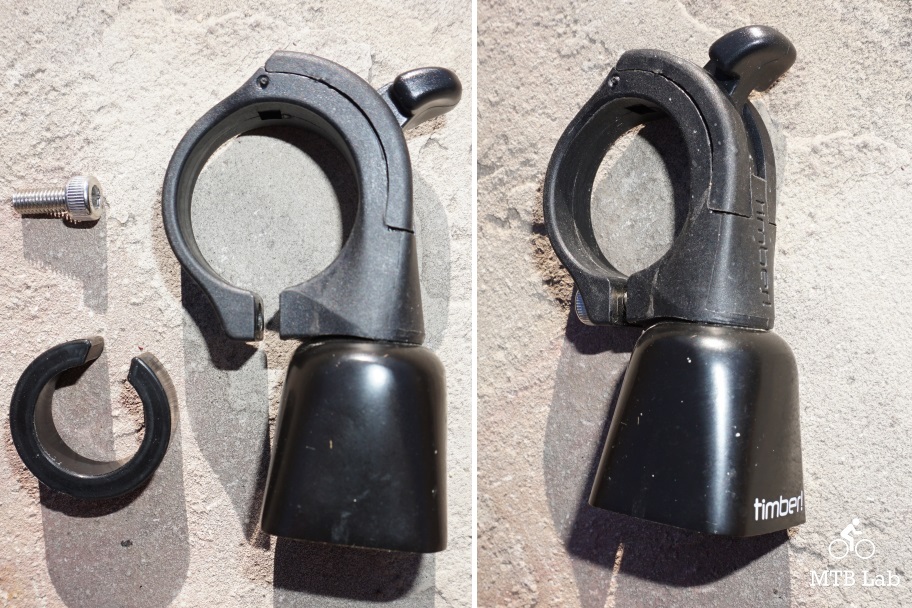
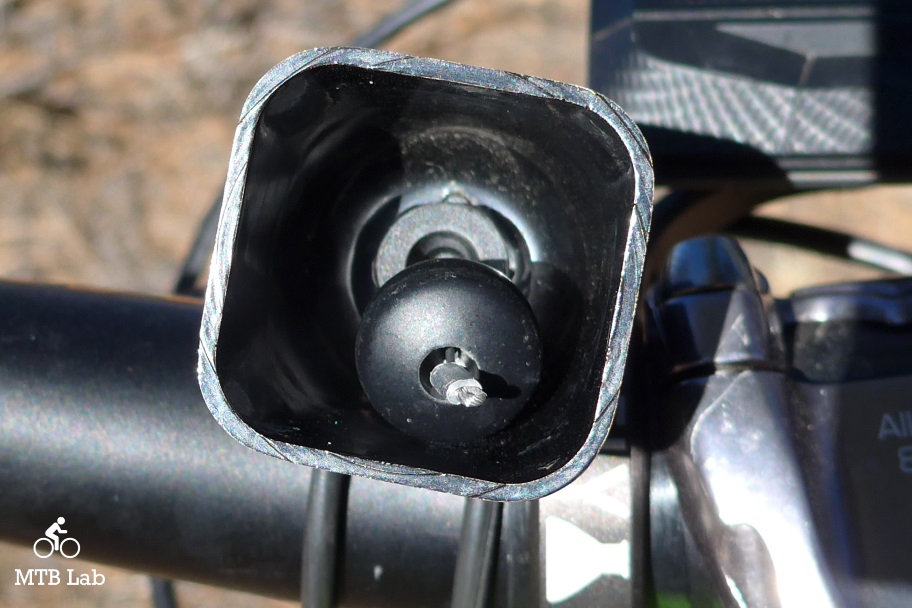
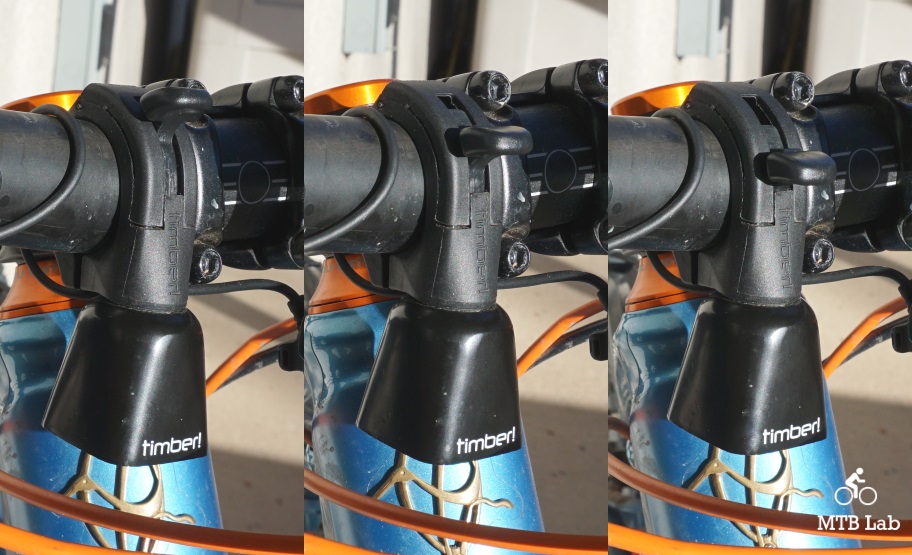
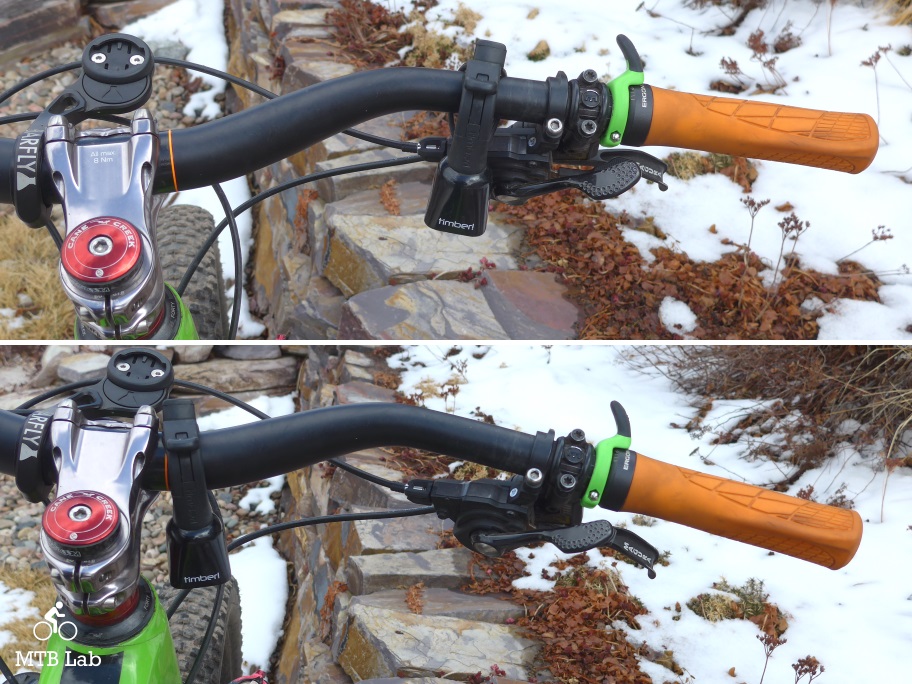
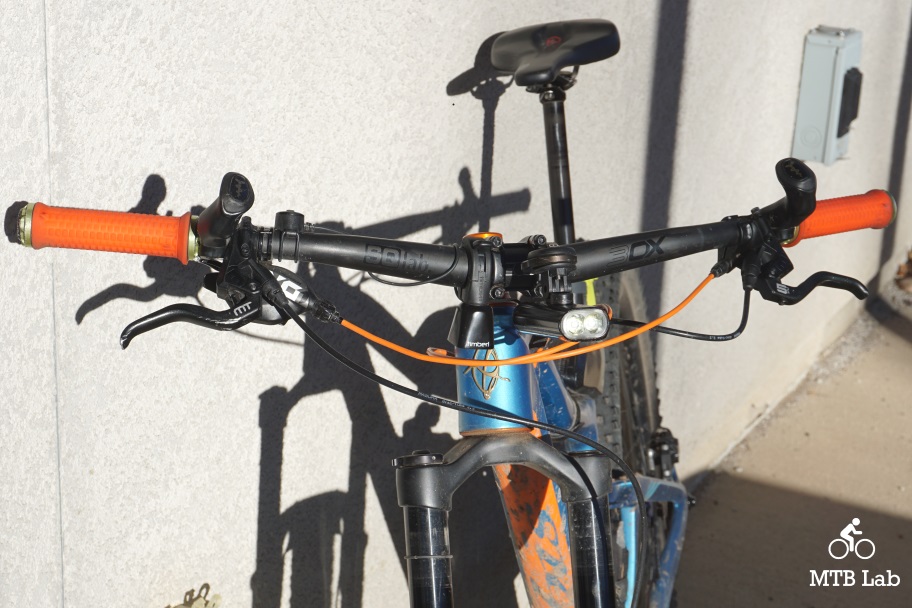





{ 2 comments… read them below or add one }
Thanks for the review! What are those bar-ends that are on the inside of your grips on the Ibis? Looks like a good solution for commuting on a mtb.
Brian,
The little green ones are Togs, which are really just thumb hooks. The big ones are SQlab 411 Innerbarends, which are excellent.
Brian